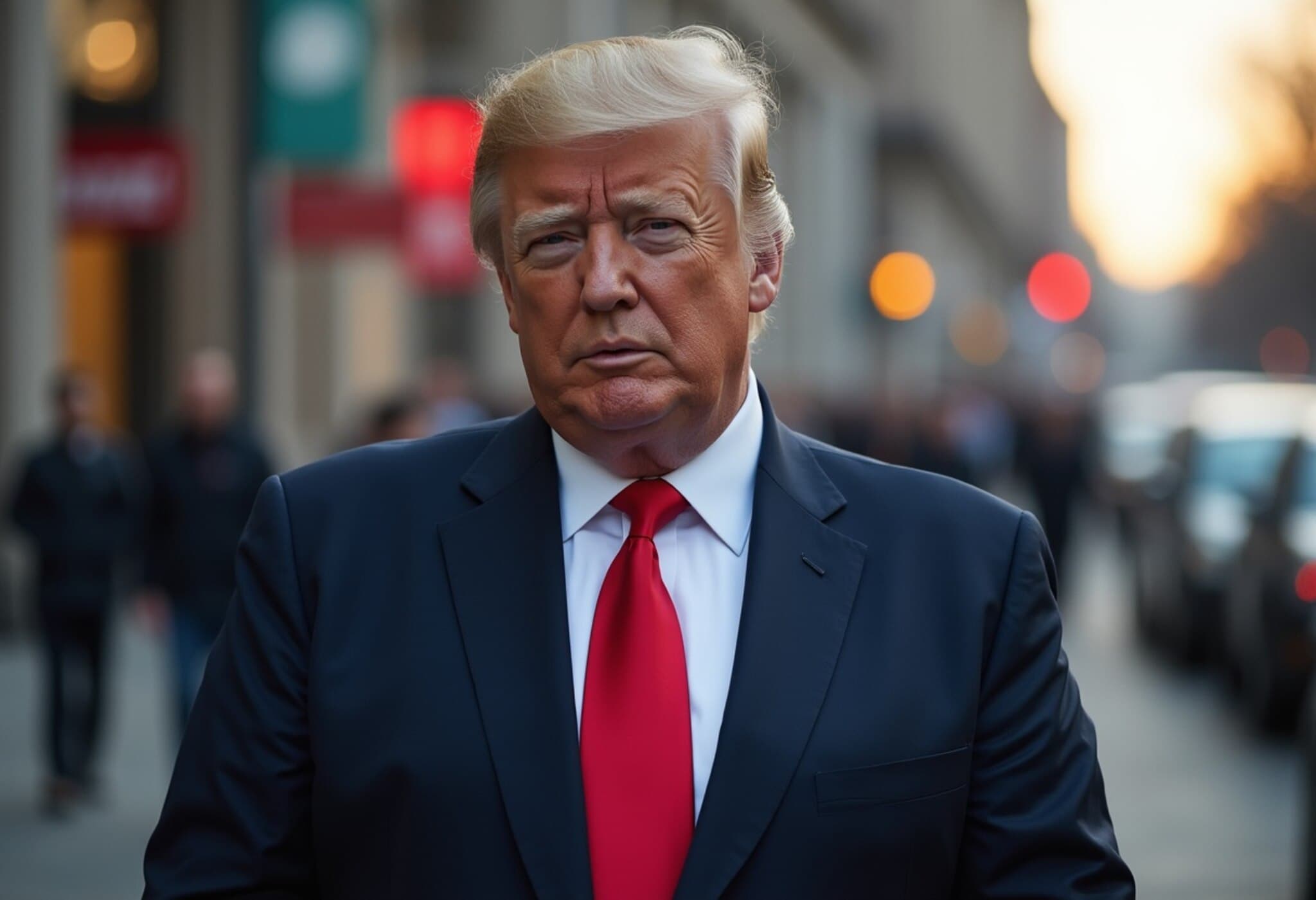Trump Issues Stark Warning to Russia Over Ukraine Conflict
On Monday, former President Donald Trump delivered a pointed ultimatum to Moscow, demanding that Russia cease its war in Ukraine within the next 50 days or face a wave of new, crippling economic sanctions. The announcement came during a meeting with NATO Secretary General Mark Rutte at the White House, where Trump also unveiled a significant arms agreement aimed at bolstering NATO allies and Kyiv with advanced military hardware.
Escalating Pressure: Sanctions and Tariffs on Russia
Trump emphasized the seriousness of Washington’s stance, explaining that failure to reach a diplomatic resolution within the 50-day window would lead to “very severe tariffs” on Russian goods — approximately a 100% tariff — and the implementation of secondary tariffs targeting Russia’s trading partners. Such measures aim to exacerbate Moscow’s economic isolation amid ongoing Western sanctions, potentially delivering a decisive blow to Russia’s ability to sustain its military campaign.
Expert Insight:
This threat of secondary sanctions signals a strategic shift toward greater economic containment of Russia, a move aligned with broader U.S. policy trends that prioritize cutting off adversaries’ access to global markets and supply chains. Economists warn, however, that the ripple effects could complicate global trade patterns and increase energy prices, underscoring the high stakes of escalating sanctions in a globally interconnected economy.
Historic NATO Arms Deal to Support Ukraine
Alongside the sanctions threat, Trump and Rutte announced a landmark deal wherein NATO would purchase billions of dollars’ worth of U.S. military equipment — including cutting-edge Patriot missile defense systems — to be rapidly delivered to Ukrainian forces. This initiative represents one of the largest coordinated Western arms provisions to Kyiv since the conflict began in 2022.
- Equipment Includes: Patriot missile defense systems, missiles, ammunition, and air defense technologies.
- Participating Countries: Finland, Denmark, Sweden, Norway, the United Kingdom, the Netherlands, and Canada.
- Objective: To enable Ukraine to defend against intensified Russian drone and missile strikes effectively.
Secretary General Rutte characterized the deal as a significant evolution in NATO’s commitment, highlighting that European nations are stepping up financial contributions to share the burden of defense aid. “This is only the first wave,” Rutte said, underscoring ongoing plans to expand support.
Contextual Perspective:
This coordinated arms delivery underscores a more united NATO front, marking a departure from earlier fractures where support commitments varied widely among member states. It also marks a critical pivot from Trump’s earlier rhetoric, which had cast doubts about U.S. commitments to Ukraine, revealing the complex interplay of domestic politics and foreign policy.
Shifting Dynamics: Trump’s Changing Stance on Putin and Ukraine
Trump’s relationship with President Vladimir Putin has been notably complex and, at times, contradictory. Initially expressing hopes for a rapid resolution to the conflict at the start of his recent term, Trump’s tone has hardened amid Russia’s sustained offensive and escalating attacks against Ukrainian civilians.
“I don’t want to say he’s an assassin, but he’s a tough guy,” Trump remarked about Putin, signaling frustration but acknowledging Putin’s calculated ruthlessness. Recent meetings and statements suggest Trump is aligning more closely with a robust support strategy for Ukraine, perhaps reflecting geopolitical realities and domestic pressures.
On-the-Ground Impact and Ukrainian Response
Meanwhile, Ukraine continues to bear the brunt of a relentless Russian military campaign. UN reports indicate civilian casualties reached a three-year high in June due to intensified missile and drone strikes. Russian forces claimed recent advances in eastern Ukraine, seizing villages in the Donetsk and Zaporizhzhia regions, adding to the conflict’s volatility.
At the same time, Ukrainian President Volodymyr Zelensky welcomed the renewed U.S. support, describing a "productive meeting" with Trump’s special envoy Keith Kellogg and underscoring cooperation on air defense and joint weapons production with European partners. In a strategic move to bolster governance, Zelensky proposed a major cabinet reshuffle, nominating Economy Minister Yulia Svyrydenko as the potential new prime minister, highlighting Ukraine’s resolve amid these challenging times.
What Lies Ahead: The Broader Implications
The dual announcement of harsher economic sanctions and a sweeping NATO arms package reflects a pivotal moment in Western engagement with the Ukraine crisis. It illustrates renewed transatlantic cohesion and a willingness to impose steep costs on Russia, while materially enhancing Ukraine’s defense capabilities.
However, questions remain about whether Russia will respond through escalation or diplomatic engagement and how these intensified measures will affect the fragile geopolitical balance. Moreover, concerns about the broader humanitarian impact and long-term regional stability are increasingly urgent as the conflict enters its fourth year.
Editor’s Note:
This development marks a critical juncture in the ongoing Ukraine conflict — combining economic warfare with military support on an unprecedented scale. The world watches as these measures test Moscow's limits and the West's resolve. As policymakers calibrate their next moves, the stakes for global security and the future of European peace could not be higher.
For further analysis and updates on the Ukraine crisis and international security dynamics, stay tuned to our coverage.

